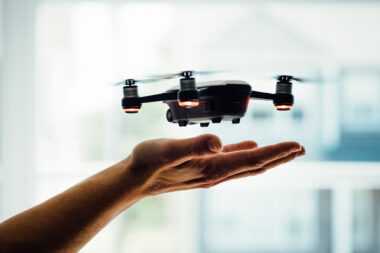The integration of the Digital Supply Chain with the Industrial Internet of Things (IIoT) marks a revolutionary leap in the way businesses manage and optimize their supply chain processes. In this era of technological advancement, the Digital Supply Chain leverages the power of IIoT to transform traditional supply chain management, introducing unprecedented levels of efficiency, connectivity, and intelligence.
The Industrial Internet of Things refers to the network of interconnected devices, sensors, and machines embedded with advanced technology that communicate and exchange data in industrial settings. When applied to the supply chain, this connectivity creates a dynamic ecosystem where every link in the chain becomes an intelligent node, capable of collecting, analysing, and transmitting real-time data.
The Digital Supply Chain with IIoT introduces a paradigm shift from static and siloed operations to a seamlessly connected and data-driven model. It incorporates a diverse range of technologies, including sensors, data analytics, artificial intelligence, and automation, to bring about enhanced visibility, predictive insights, and rapid adaptability.
This transformation enables businesses to monitor their entire supply chain in real time, gaining valuable insights into the performance of each component. From manufacturing plants and warehouses to transportation and distribution, every stage of the supply chain becomes a source of actionable data. This data-driven approach empowers organizations to make informed decisions, optimize processes, and respond swiftly to changing market dynamics.
Key components of the Digital Supply Chain with IIoT include:
- IoT Sensors and Devices: Embedded in machinery, products, and infrastructure to capture real-time data.
- Data Analytics: Utilized for predictive forecasting, trend analysis, and optimization.
- Artificial Intelligence: Enables adaptive learning, automation, and intelligent decision-making.
- Blockchain Technology: Ensures transparent and secure transactions across the supply chain.
- Automation and Robotics: Streamlines operations in manufacturing, warehousing, and transportation.
The Digital Supply Chain with IIoT is not merely a technological upgrade but a strategic approach that redefines how businesses interact with their supply chain. It aligns supply chain processes with the digital age, fostering agility, resilience, and the ability to meet the demands of an ever-evolving market. As businesses embark on this transformative journey, the Digital Supply Chain with IIoT emerges as a cornerstone in building a responsive, efficient, and future-ready supply chain ecosystem.
Algorithms Involved
- Route Optimization Algorithms:
- Role: Determine the most efficient routes for transportation, considering factors like traffic, weather, and delivery deadlines.
- Examples: Dijkstra’s algorithm, A* algorithm.
- Predictive Analytics Algorithms:
- Role: Forecast demand, identify potential disruptions, and optimize inventory levels.
- Examples: Time series analysis, machine learning algorithms for demand forecasting.
- Inventory Optimization Algorithms:
- Role: Minimize carrying costs while maintaining optimal inventory levels.
- Examples: Economic Order Quantity (EOQ), reorder point algorithms.
- Machine Learning Algorithms for Quality Control:
- Role: Identify patterns and anomalies in product quality, enabling proactive quality control.
- Examples: Support Vector Machines (SVM), Neural Networks for image recognition.
- Blockchain Consensus Algorithms:
- Role: Reach agreement on the validity of transactions and ensure a secure and transparent supply chain.
- Examples: Proof of Work (PoW), Proof of Stake (PoS), Practical Byzantine Fault Tolerance (PBFT).
- Dynamic Pricing Algorithms:
- Role: Adjust prices in real-time based on market conditions, demand fluctuations, and competitor pricing.
- Examples: Pricing optimization algorithms, machine learning for dynamic pricing.
- Routing Algorithms for Autonomous Vehicles:
- Role: Plan the most efficient paths for autonomous vehicles within warehouses or during transportation.
- Examples: Pathfinding algorithms, obstacle avoidance algorithms.
- Data Compression Algorithms:
- Role: Reduce the size of data transmitted across the network, optimizing bandwidth usage.
- Examples: Run-Length Encoding (RLE), Huffman Coding.
- Machine Learning for Supplier Risk Assessment:
- Role: Evaluate and predict supplier performance and potential risks.
- Examples: Decision trees, Bayesian networks for risk assessment.
- Cybersecurity Algorithms:
- Role: Detect and prevent cyber threats, ensuring the security of digital assets.
- Examples: Intrusion Detection Systems (IDS), encryption algorithms.
- Edge Computing Algorithms:
- Role: Execute local computation on edge devices, reducing latency and optimizing resource usage.
- Examples: Edge analytics algorithms, lightweight machine learning models.
These algorithms collectively contribute to the intelligence and efficiency of the digital supply chain, allowing organizations to make informed decisions, respond to dynamic changes, and optimize their operations in real-time.
IoT Sensors and Devices:
IoT sensors and devices play a pivotal role in the digital transformation of industries, seamlessly embedded in machinery, products, and infrastructure to capture real-time data. These interconnected devices form the backbone of the Internet of Things (IoT), enabling a myriad of applications across diverse sectors.
Components and Types of IoT Sensors:
IoT sensors are diverse, ranging from simple temperature sensors to complex image sensors and beyond.
- Various sensor technologies, including but not limited to:
- Temperature sensors
- Pressure sensors
- Accelerometers
- Gyroscopes
- Proximity sensors
- Image sensors
- RFID tags
- GPS modules
Integration into Machinery:
IoT sensors are seamlessly integrated into machinery to monitor and collect real-time data on operational parameters.
- Embedded systems, microcontrollers, communication interfaces (UART, I2C, SPI).
Incorporation into Products:
Products are equipped with embedded sensors for functionalities such as condition monitoring, tracking, and interaction with the environment.
- Miniaturized sensors, wireless communication modules (Bluetooth, Zigbee, LoRa).
Deployment in Infrastructure:
IoT devices are strategically placed in infrastructure to monitor structural health, environmental conditions, and overall performance.
- Wireless sensor networks, mesh networks, cloud connectivity.
Real-time Data Capture and Transmission:
IoT sensors capture data in real-time, facilitating immediate insights into the status and performance of connected entities.
- Edge computing, data transmission protocols (MQTT, CoAP, HTTP/HTTPS).
Predictive Forecasting, Trend Analysis, and Optimization
Data Collection:
- The process begins with the collection of raw data from various sources, which could include IoT sensors, databases, logs, and external datasets.
- Data collection tools, ETL (Extract, Transform, Load) processes, data connectors.
Data Preprocessing:
- Raw data is cleaned, filtered, and transformed to ensure consistency and remove any inconsistencies or irrelevant information.
- Data cleaning algorithms, filtering techniques, normalization methods.
Data Storage:
- Processed data is stored in databases or data warehouses for easy retrieval and analysis.
- Relational databases, NoSQL databases, data warehouses.
Exploratory Data Analysis (EDA):
- Initial analysis to understand the data, identify patterns, correlations, and outliers.
- Statistical analysis tools, visualization libraries (e.g., Matplotlib, Seaborn).
Predictive Modelling:
- Building models that can predict future trends or outcomes based on historical data.
- Machine learning algorithms (e.g., regression, decision trees, neural networks), model training frameworks (e.g., TensorFlow, scikit-learn).
Trend Analysis:
- Analysing historical data to identify trends and patterns that can inform decision-making.
- Time series analysis, trend detection algorithms.
Optimization Algorithms:
- Utilizing algorithms to optimize processes, resource allocation, or decision-making based on the analysed data.
- Optimization algorithms (e.g., linear programming, genetic algorithms), mathematical modelling.
Real-time Analytics:
- Performing analytics on streaming data to gain immediate insights.
- Stream processing frameworks (e.g., Apache Flink, Kafka Streams), real-time analytics platforms.
Visualization:
- Presenting the analysed data in a visual format to facilitate easy interpretation and decision-making.
- Data visualization tools (e.g., Tableau, Power BI), custom visualization libraries.
Continuous Improvement:
- Iterative process of refining models, algorithms, and analyses based on feedback and changing data patterns.
- Continuous integration and deployment (CI/CD) pipelines, model versioning.
Artificial Intelligence
Data Collection and Preprocessing:
- AI systems heavily rely on large datasets for learning. Data is collected from various sources and pre-processed to remove noise, outliers, and irrelevant information.
- Technologies: Data collection tools, preprocessing algorithms, data cleaning techniques.
Feature Engineering:
- Identifying and selecting relevant features from the dataset to provide meaningful inputs for AI models.
- Technologies: Feature selection algorithms, dimensionality reduction techniques.
Machine Learning Models:
- The core of AI involves building models that can learn patterns and make predictions or decisions.
- Technologies: Supervised learning (e.g., regression, classification), unsupervised learning (e.g., clustering, dimensionality reduction), reinforcement learning.
Neural Networks and Deep Learning:
- Advanced machine learning techniques that mimic the structure and function of the human brain. Deep learning involves neural networks with multiple layers for complex pattern recognition.
- Technologies: Neural network architectures, deep learning frameworks (e.g., TensorFlow, PyTorch).
Training and Learning:
- AI models are trained using historical data to learn patterns and relationships. The learning process involves adjusting model parameters to minimize errors.
- Technologies: Training algorithms, optimization techniques (e.g., gradient descent).
Adaptive Learning:
- AI systems continuously learn and adapt to new data and changing environments, improving their performance over time.
- Technologies: Online learning algorithms, transfer learning, adaptive models.
Natural Language Processing (NLP):
- AI’s ability to understand, interpret, and generate human language. NLP is crucial for applications like chatbots, language translation, and sentiment analysis.
- Technologies: Tokenization, part-of-speech tagging, named entity recognition, language models (e.g., BERT).
Computer Vision:
- Enabling machines to interpret and understand visual information from the world, including image and video processing.
- Technologies: Image recognition algorithms, object detection, facial recognition, convolutional neural networks (CNNs).
Automation and Robotics:
- AI enables machines to perform tasks autonomously, leading to automation in various industries. Robotics involves the integration of AI into physical systems.
- Technologies: Robotic process automation (RPA), autonomous systems, reinforcement learning for robotic control.
Intelligent Decision-Making:
- AI systems make informed decisions based on learned patterns, data analysis, and predefined rules.
- Technologies: Decision trees, rule-based systems, reinforcement learning for decision-making.
Ethics and Bias Mitigation:
- Addressing ethical concerns and mitigating biases in AI systems to ensure fair and responsible use.
- Technologies: Ethical AI frameworks, bias detection algorithms, fairness metrics.
Blockchain Technology
Decentralized Network Setup:
- The blockchain network is decentralized, meaning it operates on a peer-to-peer (P2P) network of computers (nodes) that share control and validation of transactions.
- Technologies: P2P network protocols, consensus algorithms (e.g., Proof of Work, Proof of Stake).
Transaction Initiation:
- A participant initiates a transaction by creating a digital record containing relevant information, such as product details, quantity, and parties involved.
- Technologies: Digital signatures, cryptographic hashing.
Transaction Verification:
- The transaction is broadcasted to all nodes in the network. Nodes use consensus mechanisms to validate and verify the transaction’s legitimacy.
- Technologies: Consensus algorithms, cryptographic verification.
Block Formation:
- Validated transactions are grouped into a block. Each block contains a reference to the previous block, forming a chain of blocks (blockchain).
- Technologies: Merkle trees for transaction organization, block headers.
Consensus Mechanism:
- Nodes in the network reach a consensus on the validity of transactions and the addition of a new block to the blockchain. This ensures agreement on the state of the ledger.
- Technologies: Proof of Work (PoW), Proof of Stake (PoS), Practical Byzantine Fault Tolerance (PBFT).
Block Addition (Mining):
- Once a consensus is reached, the new block is added to the blockchain through a process known as mining in PoW-based systems. In PoS, validators create new blocks.
- Technologies: Cryptographic puzzles (PoW), stake-based selection (PoS).
Immutable Ledger:
- Once a block is added, it is cryptographically linked to the previous block. This creates an immutable and tamper-resistant ledger since altering one block would require changing all subsequent blocks.
- Technologies: Cryptographic hashing, consensus mechanisms.
Smart Contracts Execution:
- Smart contracts, self-executing agreements with predefined rules, can be embedded in the blockchain. They automatically execute contractual clauses when predefined conditions are met.
- Technologies: Smart contract languages (e.g., Solidity), Ethereum Virtual Machine (EVM).
Decentralized Identity Management:
- Participants in the blockchain network have unique cryptographic identities. Identity management is decentralized and secure.
- Technologies: Public and private key cryptography, decentralized identifiers (DIDs).
Permissioned and Permissionless Blockchains:
- Depending on the use case, blockchains can be permissioned (accessible to known entities) or permissionless (open to anyone). This choice impacts privacy and control.
- Technologies: Access control mechanisms, consensus models.
Transparent Access to Information:
- All participants have access to the entire transaction history and data on the blockchain, ensuring transparency and traceability.
- Technologies: Distributed ledger, cryptographic hash functions.
Secure Supply Chain Transactions:
- Blockchain enhances security by reducing the risk of fraud, tampering, and errors in supply chain transactions. The transparent and auditable nature of the ledger promotes trust among participants.
- Technologies: Cryptography, consensus mechanisms.
Automation and Robotics in Industrial Applications
Identification of Processes for Automation:
- Description: Identify repetitive, time-consuming, or hazardous tasks suitable for automation. This could include tasks like assembly, welding, painting, or material handling.
- Technologies: Industrial engineers, process analysis.
Design and Planning:
- Description: Develop a detailed plan for the automation system, considering the specific requirements of the identified processes. This involves selecting the type of robots, designing workstations, and integrating automation components.
- Technologies: Computer-aided design (CAD), simulation software.
Selection of Robotic Systems:
- Description: Choose robotic systems based on the tasks they need to perform. Consider factors such as payload capacity, reach, precision, and environmental compatibility.
- Technologies: Robotics technology, grippers, end effectors
Integration of Sensors and Vision Systems:
- Description: Integrate sensors (e.g., proximity sensors, cameras) and vision systems to provide robots with feedback for real-time decision-making. This enhances adaptability and allows robots to respond to changes in the environment.
- Technologies: Sensor technology, vision systems, machine learning.
Programming of Robots:
- Description: Program robots to perform specific tasks. This can involve offline programming using simulation software or online programming with the robots physically present in the workspace.
- Technologies: Robot programming languages, simulation software.
Safety Measures:
- Description: Implement safety measures to protect human workers and ensure compliance with safety standards. This may include the installation of safety barriers, emergency stop systems, and collaborative robots designed to work alongside humans safely.
- Technologies: Safety sensors, emergency stop systems, collaborative robot design.
Communication and Connectivity:
- Description: Establish communication protocols to enable seamless integration between different automated systems. This allows for coordinated operations and data exchange.
- Technologies: Industrial communication protocols (e.g., OPC-UA), IoT connectivity.
Testing and Validation:
- Description: Conduct thorough testing to ensure that the automated system operates as intended. This includes testing individual components, as well as the overall system, for functionality and reliability.
- Technologies: Simulation testing, real-world testing.
Implementation and Deployment:
- Description: Deploy the automated system in the industrial environment. This involves the physical installation of robots, sensors, and other automation components onto the production line.
- Technologies: Installation tools, robotics deployment.
Continuous Monitoring and Maintenance:
- Description: Implement a system for continuous monitoring and maintenance to ensure optimal performance. This includes monitoring the health of robots, updating software, and addressing any issues promptly.
- Technologies: Predictive maintenance tools, condition monitoring systems.
Data Analysis and Optimization:
- Description: Utilize data collected from sensors and automation systems to analyse performance and identify opportunities for optimization. This may involve adjusting parameters, improving algorithms, or reprogramming robots for enhanced efficiency.
- Technologies: Data analytics, machine learning algorithms.
Scalability and Adaptability:
- Design automation systems with scalability and adaptability in mind to accommodate changes in production volume or modifications to processes. This ensures that the system can evolve with the needs of the industry.
- Technologies: Flexible automation components, modular designs.
Conclusion:
Implementing real-time monitoring in the supply chain through a digital approach with IIoT offers unprecedented advantages. The seamless integration of sensors, data analytics, and edge processing empowers organizations to gain immediate insights, enhance decision-making, and optimize operations. This paradigm shift towards real-time monitoring not only improves efficiency but also establishes a foundation for agile and adaptive supply chain management in the dynamic landscape of modern industries.



